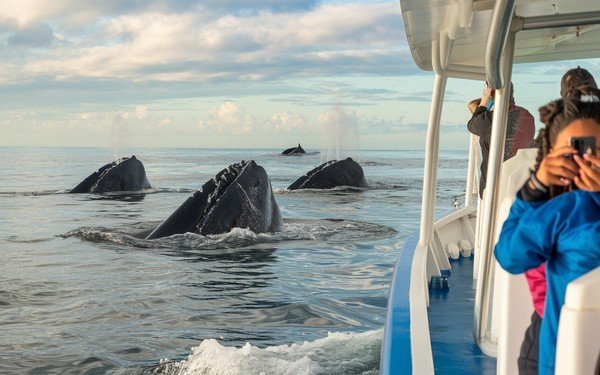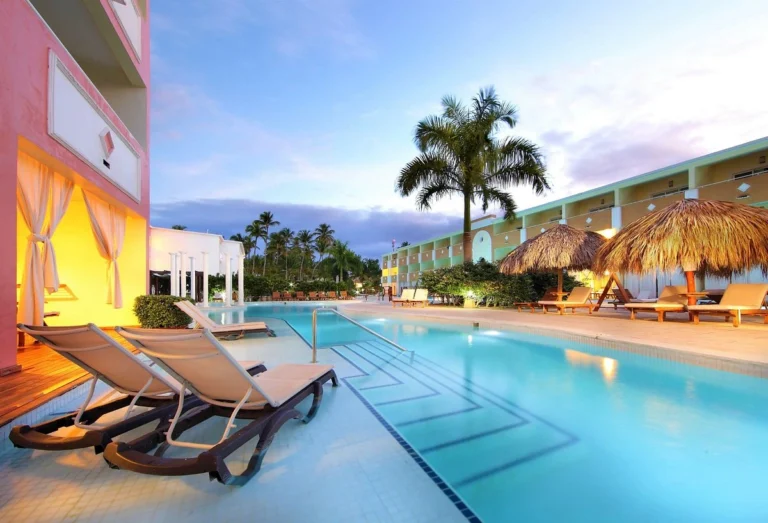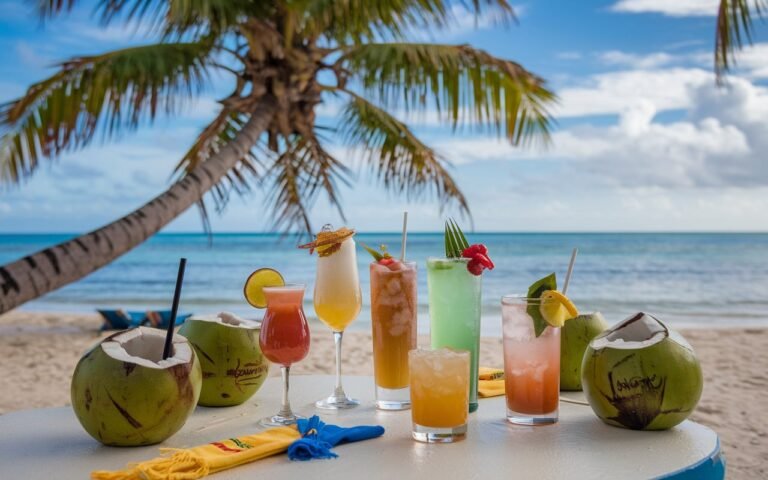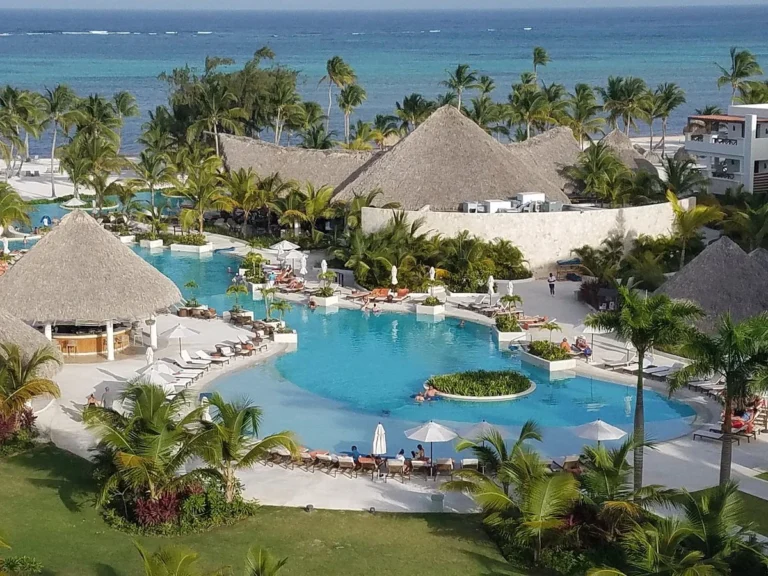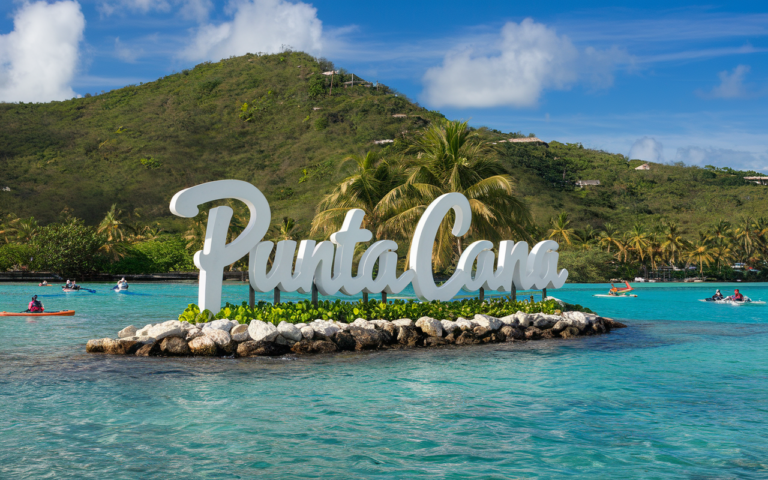Whale Watching in the Dominican Republic: A Complete Guide to the Best Experiences
This article may contain affiliate links to trusted partners, which help run this site at no extra cost to you.
Whale watching in the Dominican Republic offers a chance to witness the majestic humpback whales up close.
The prime time for this incredible experience is between January and March. During this time, these giants gather in Samaná Bay for their mating season.
Travelers flock to this destination to see the whales breach, tail slap, and interact with one another, providing a breathtaking display of nature.
Samaná Bay is one of the best locations worldwide for whale watching, attracting enthusiasts from many places.
Various tours cater to all interests, allowing visitors to choose from serene boat rides to more adventurous excursions. Each option ensures a memorable encounter with these remarkable creatures.
While whale watching is the main attraction, the Dominican Republic also offers additional activities and beautiful landscapes.
From exploring pristine beaches to indulging in local cuisine, visitors can make the most of their trip while enjoying the natural beauty of this tropical paradise.
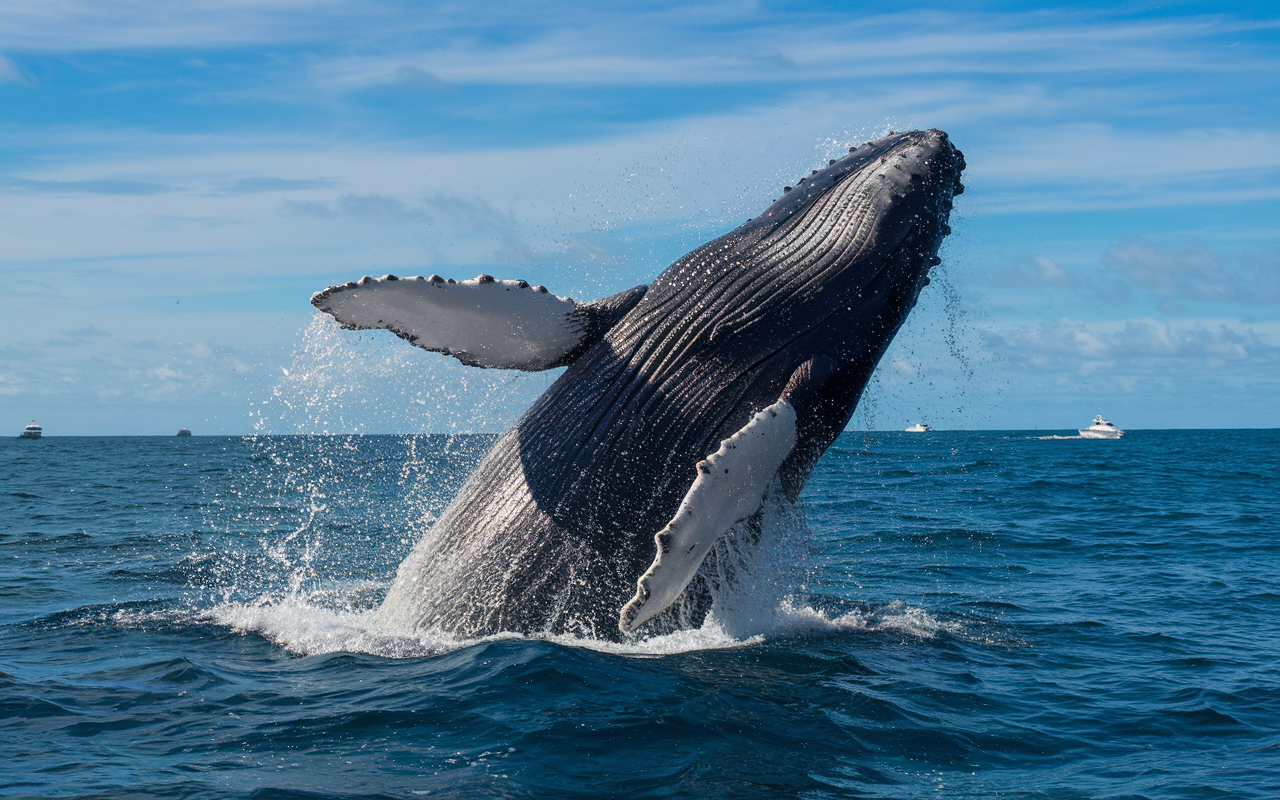
Key Takeaways
- The whale watching season in the Dominican Republic runs from January to March.
- Samaná Bay is recognized as a top location for observing humpback whales.
- Various excursions are available to enhance the whale watching experience.
Understanding Whale Watching in the Dominican Republic
Whale watching in the Dominican Republic offers a unique opportunity to witness the majestic humpback whales during their migration. Understanding the significance of this event, the protected areas involved, and the conservation efforts in place is essential for appreciating this remarkable natural phenomenon.
The Significance of Humpback Whale Migration
Every year, humpback whales migrate to the warm waters of the Dominican Republic for mating and calving. This migration is a crucial part of their lifecycle, allowing them to give birth in a safe environment.
The peak season for whale watching occurs from mid-January to March, attracting many visitors.
Samaná Bay is a key area for this migration. It provides a sanctuary for these marine mammals. Tourists can witness various behaviors, including breaching and tail slapping. This interaction allows for a deeper appreciation of whale biology and behavior.
Marine Parks and Conservation Areas
The Dominican Republic has several marine parks and conservation areas dedicated to protecting marine life. The Navidad and Silver Banks Marine Mammals Sanctuary is one of the most significant.
Established over 50 years ago, it serves as a critical breeding ground for humpback whales.
This sanctuary covers over 12,000 square kilometers of ocean. It is vital for the survival of whale populations. The presence of such areas helps maintain healthy ecosystems and protects other marine species as well. Visitors are encouraged to support conservation efforts during their whale watching experiences.
Regulatory Framework and Conservation Efforts
Regulatory measures play a key role in safeguarding whale populations. The Dominican government has implemented strict guidelines for whale watching activities.
This ensures that interactions between boats and whales are responsible and sustainable.
Tour operators are required to follow established protocols. This includes keeping a safe distance from the whales and minimizing noise pollution.
Ongoing conservation efforts focus on education and awareness, aiming to protect the whale population from threats like climate change and habitat loss.
These regulations help preserve the whales’ natural behaviors and promote a sustainable tourism model that benefits the local economy and environment.
The Peak Season for Whale Watching
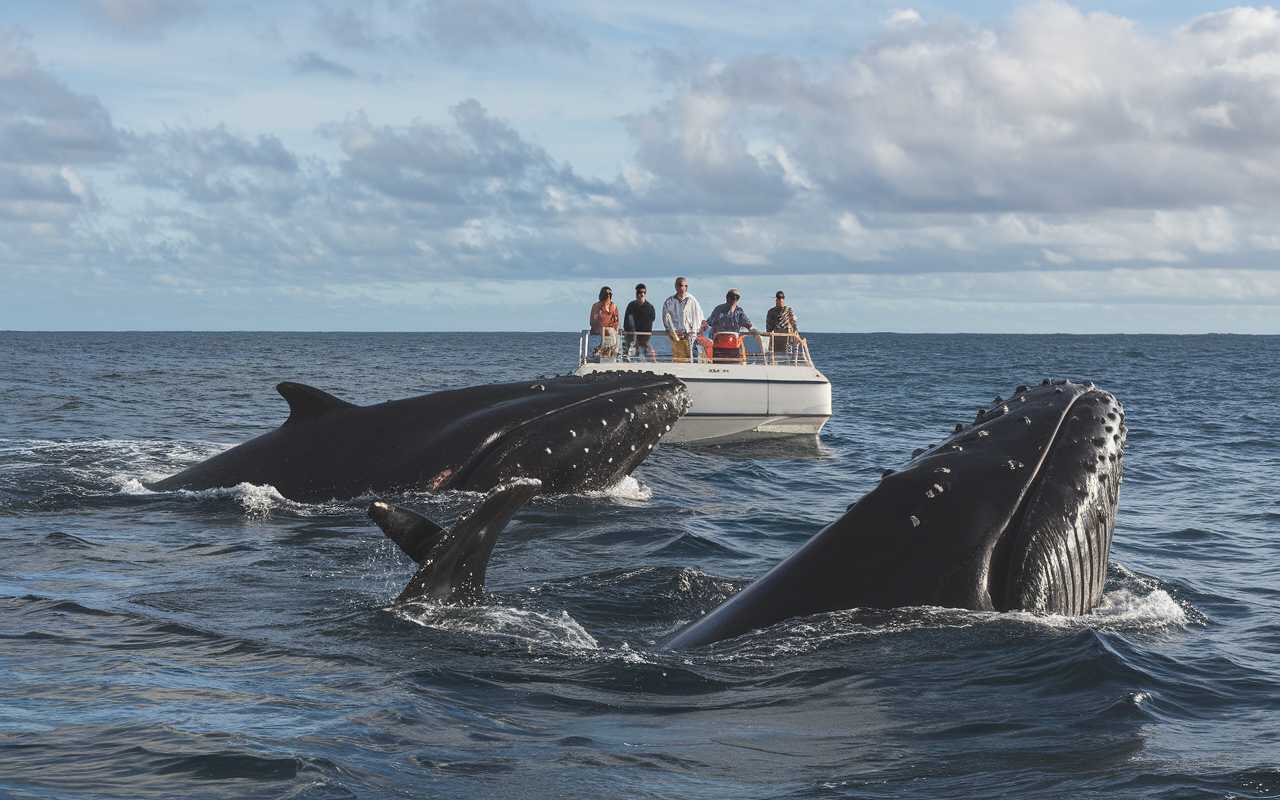
The peak season for whale watching in the Dominican Republic attracts many nature lovers. This time frame offers the best opportunities to observe humpback whales as they migrate for breeding.
Identifying the Whale Watching Season
Whale watching season typically starts in mid-December and runs through mid-April. However, the most active period occurs from mid-January to March.
During these months, whale sightings are more frequent, making it easier for enthusiasts to catch a glimpse of these magnificent creatures.
The Bay of Samaná is one of the top locations for whale watching. Visitors can expect to see numerous humpback whales during this peak season. Tours are widely available, and many boats depart daily, ensuring a good chance of spotting whales.
Weather and Whale Watching Conditions
Weather plays a crucial role in successful whale watching.
The Dominican Republic enjoys warm weather during the whale season, which improves viewing conditions for tourists.
Generally, the ocean is calmer, allowing for smoother boat rides.
Temperatures range from 70°F to 85°F. This comfortable climate helps create a pleasant experience for those venturing out to sea.
Clear skies enhance visibility, making it easier to spot whales breaching and tail slapping on the surface of the water.
It is essential for visitors to check local forecasts before heading out. Being aware of the weather can significantly improve the chances of a successful whale watching adventure.
Prime Locations for Whale Encounters
The Dominican Republic offers several prime locations for unforgettable whale watching experiences. These areas are known for their rich marine life and provide opportunities to see humpback whales in their natural habitat.
Samaná Bay and Vicinity
Samaná Bay is one of the top destinations for whale watching in the Dominican Republic. This area is famous for its crystal-clear waters and stunning scenery. The peak season for whale encounters is from mid-January to mid-March.
Tours operate daily, taking visitors out to sea where they can witness these majestic creatures breaching and slapping the water.
In addition to Samaná Bay, nearby Cayo Levantado offers charted tours that provide excellent viewing opportunities.
Los Haitises National Park is also nearby and adds a natural element with its lush landscapes and unique wildlife, enhancing the overall experience of whale watching in this region.
Silver Bank and Nearby Spots
Silver Bank is another premier location for those seeking an exceptional whale watching experience. Located north of the Dominican Republic, this shallow bank is a breeding ground for humpback whales. The best time to visit is also between mid-January and mid-March.
A variety of whale watching tours operate in this area, allowing for close encounters with these gentle giants. Visitors often report sightings of mothers and calves as they rest and play in the warm waters.
Nearby spots offer additional chances to see whales, providing a diverse range of tour options.
Other Notable Whale Watching Spots
Beyond Samaná Bay and Silver Bank, several other notable whale watching locations exist.
Punta Cana provides accessible tours for tourists staying in resort areas. This location offers a chance to observe whales in a beautiful coastal setting.
Puerto Plata is another area where tours frequently depart, giving visitors another option for whale watching.
Bayahibe also hosts whale watching excursions, which are perfect for those exploring the southern coast. Each of these spots provides unique opportunities to see humpback whales, making them great choices for ocean lovers.
Types of Whale Watching Excursions
There are various types of whale watching excursions available in the Dominican Republic. Each option offers a unique experience based on the traveler’s preferences and needs. It is essential to understand the differences to choose the best tour.
Choosing the Right Whale Watching Tour
Selecting the right whale watching tour can enhance the experience significantly. Tour operators offer various packages depending on the season, location, and type of whales spotted.
Most excursions take place in Samaná Bay, known for its rich marine life.
Travelers should consider factors like the duration of the tour, timing, and group size. Popular tours typically operate from mid-January to late March.
To ensure a memorable experience, research the tour operator’s reputation.
Customer reviews can provide insight into the quality of the whale watching excursion. Look for tours that emphasize responsible practices to protect wildlife while ensuring safety.
Private vs Group Tours
When deciding between private and group tours, both options come with their own benefits.
Group tours usually cost less and allow travelers to meet new people. These trips often feature a larger boat, making it possible to accommodate more guests.
In contrast, private tours offer a more personalized experience. They allow for flexibility in scheduling and can cater to specific interests, such as photography or education about marine life.
Travelers desiring solitude or a tailored experience may prefer the private option. However, those seeking a lively atmosphere might enjoy the camaraderie of group tours. Each type of tour has something different to offer, making personal preference an important factor.
Whale Behavior and Activities
Whales exhibit a variety of fascinating behaviors during their active season. Understanding these activities offers insights into their lives and enhances the whale-watching experience.
Breaching, Tail Slapping, and Vocalizations
Breaching is a spectacular behavior where whales leap out of the water and crash back down. This action is thought to communicate strength and energy.
Tail slapping, where whales hit the water with their tails, serves similar purposes. It can signal distress or assert dominance.
Vocalizations are equally important. These marine mammals, varied in species, use sounds to navigate and communicate.
Their songs can travel long distances underwater, assisting in social interactions.
Witnessing these behaviors during whale sightings creates a memorable experience. Observers often see humpback whales displaying these activities, especially between mid-January and mid-March.
Mating and Calving Observations
Mating season for certain whale species occurs during the peak of their winter visit to the Dominican Republic. This period allows for increased encounters between males and females.
Calving, or giving birth, typically takes place in warmer waters. The shallow bays of Samaná provide a safe environment for mothers and their young calves.
Observing these calving activities is rare and exciting. Newborn calves remain close to their mothers, who care for them diligently.
These natural behaviors contribute to the rich experience of whale-watching, revealing the deep connections in the lives of these cetaceans.
Additional Activities and Attractions
The Dominican Republic offers a variety of activities and attractions for visitors beyond whale watching.
From stunning beaches to vibrant aquatic adventures, there are plenty of options to explore.
Exploring the Samaná Peninsula
The Samaná Peninsula is a must-visit destination known for its natural beauty. Visitors can enjoy picturesque beaches like Las Terrenas and Las Galeras, which feature soft sand and crystal-clear waters.
Local towns offer rich culture and dining experiences.
In Las Terrenas, tourists can eat at beachside restaurants serving fresh seafood and traditional Dominican dishes.
Exploring the nearby Bacardi Island invites relaxation and scenic views. This island is perfect for sunbathing or enjoying a picnic.
The combination of stunning landscapes and local culture makes the Samaná Peninsula an unforgettable part of the trip.
Snorkeling and Diving Opportunities
Snorkeling and diving in the Dominican Republic provide exciting aquatic adventures. The clear waters in spots like Cabarete are excellent for viewing marine life.
Visitors can explore coral reefs and vibrant fish in various protected areas.
Plenty of tour operators offer guided snorkeling trips that cater to all skill levels.
Diving enthusiasts can explore deeper waters for a chance to see unique species and underwater formations.
Excursions typically include equipment rental and expert instruction.
Planning Your Whale Watching Adventure
To plan a successful whale watching trip in the Dominican Republic, timing is key. The peak season runs from mid-January to March, making this the best time to see humpback whales.
Choosing the right location is important. Samaná Bay is known for its beautiful scenery and high whale activity. Whale watchers can often see over 300 whales in the area during the season.
When booking a whale watching experience, it’s wise to choose a reputable operator. Many tours offer experienced guides who can enhance the adventure.
Typical boat trips last about 2 to 4 hours and provide opportunities to see whales up close.
Accommodation options vary widely. Visitors can find everything from luxury resorts to budget-friendly hotels. Staying in Samaná or nearby areas makes it easy to access the whale watching tours.
Here are some travel tips to consider:
- Dress in layers. The ocean can be cooler than expected.
- Bring sunscreen. Protect against sunburn on the water.
- Don’t forget your camera! Capture unforgettable moments.
Plan ahead to ensure availability. Booking tours in advance can help secure the best spots and times. The adventure offers the chance to witness these magnificent creatures in their natural calving grounds.

